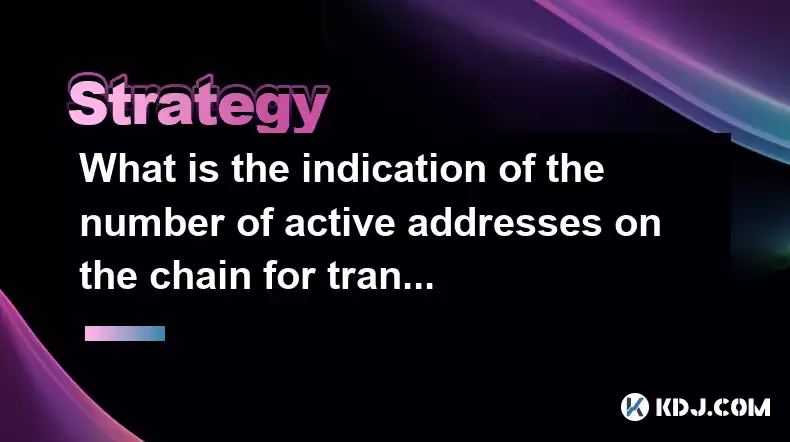-
 Bitcoin
Bitcoin $119300
2.40% -
 Ethereum
Ethereum $4254
-0.20% -
 XRP
XRP $3.184
-1.38% -
 Tether USDt
Tether USDt $1.000
0.00% -
 BNB
BNB $803.9
0.58% -
 Solana
Solana $183.1
1.50% -
 USDC
USDC $0.0000
0.01% -
 Dogecoin
Dogecoin $0.2339
-2.87% -
 TRON
TRON $0.3384
0.88% -
 Cardano
Cardano $0.8018
-0.29% -
 Hyperliquid
Hyperliquid $45.13
3.14% -
 Chainlink
Chainlink $22.10
0.96% -
 Stellar
Stellar $0.4439
-0.94% -
 Sui
Sui $3.875
-0.73% -
 Bitcoin Cash
Bitcoin Cash $570.7
0.24% -
 Hedera
Hedera $0.2589
-2.90% -
 Ethena USDe
Ethena USDe $1.001
-0.01% -
 Avalanche
Avalanche $23.83
-1.73% -
 Litecoin
Litecoin $123.8
2.61% -
 Toncoin
Toncoin $3.351
-1.13% -
 UNUS SED LEO
UNUS SED LEO $9.103
1.13% -
 Shiba Inu
Shiba Inu $0.00001356
-1.40% -
 Uniswap
Uniswap $10.93
-0.19% -
 Polkadot
Polkadot $4.057
-1.97% -
 Dai
Dai $1.000
0.01% -
 Cronos
Cronos $0.1646
4.66% -
 Ethena
Ethena $0.7974
8.11% -
 Pepe
Pepe $0.00001208
-2.89% -
 Bitget Token
Bitget Token $4.445
-1.70% -
 Monero
Monero $268.8
-2.00%
What is the indication of the number of active addresses on the chain for transactions?
Monitoring the number of active addresses on a blockchain can provide valuable insights into network usage, adoption, transaction volume, decentralization, and overall network health.
Feb 25, 2025 at 09:01 am

Key Points:
- The number of active addresses on a blockchain is a measure of the network's usage and vitality.
- Increased active addresses indicate greater adoption and transaction volume.
- A decline in active addresses can signal a slowdown in network activity or a shift towards more centralized platforms.
- Tracking active addresses can provide insights into blockchain trends, market sentiment, and the overall health of the network.
Detailed Explanation:
1. What is the Number of Active Addresses on a Blockchain?
The number of active addresses on a blockchain refers to the unique wallet addresses that have engaged in at least one transaction within a specific timeframe. This metric represents the number of users actively using the blockchain for transactions. It is typically measured on a daily or monthly basis.
2. Significance of Active Addresses:
Monitoring the number of active addresses provides valuable insights into the network's usage and vitality. A higher number of active addresses indicates:
- Increased Adoption: When more users adopt and utilize a blockchain, the number of active addresses will naturally increase.
- Higher Transaction Volume: Increased active addresses suggest a higher number of transactions being processed on the blockchain.
- Decentralization: A high number of active addresses indicates that the blockchain is being widely used by a diverse community of users, contributing to its decentralization.
3. Tracking Active Addresses:
Several methods can be used to track the number of active addresses on a blockchain:
- Block Explorers: Block explorers like Etherscan and Blockchain.com allow users to view transaction data and count the number of unique addresses involved in transactions.
- API Calls: Most blockchains provide APIs that allow developers to access real-time transaction data and count active addresses.
- Third-Party Services: Analytical services such as Glassnode and Santiment provide historical and up-to-date data on active addresses across multiple blockchains.
4. Implications of Changes in Active Addresses:
Changes in the number of active addresses can signal important trends in the blockchain ecosystem:
- Increasing Active Addresses: A sustained increase in active addresses over time indicates growing adoption, increased transaction volume, and a thriving network.
- Decreasing Active Addresses: A prolonged decline in active addresses may indicate a slowdown in network activity, a shift towards more centralized platforms, or a loss of user confidence.
5. Using Active Addresses for Market Analysis:
Traders and investors can use active address data to gain insights into market sentiment and make informed decisions:
- Bullish Sentiment: A sudden spike in active addresses can indicate increased market interest and potential bullish momentum.
- Bearish Sentiment: A sustained decrease in active addresses can suggest declining market activity and potential bearish conditions.
- Confirming Price Moves: Changes in active addresses can provide confirmation of price movements or identify potential reversals.
FAQs:
- What is the difference between active addresses and unique addresses?
Active addresses represent unique wallet addresses that have engaged in at least one transaction within a specific timeframe, while unique addresses refer to the total number of distinct addresses that have ever interacted with the blockchain.
- How do I find the number of active addresses on a blockchain?
You can use block explorers, API calls, or third-party services to obtain the number of active addresses on a blockchain.
- What are the limitations of using active address data?
Active address data can be influenced by factors such as fraud, bot activity, and multiple addresses controlled by single entities. It should be interpreted in conjunction with other metrics.
Disclaimer:info@kdj.com
The information provided is not trading advice. kdj.com does not assume any responsibility for any investments made based on the information provided in this article. Cryptocurrencies are highly volatile and it is highly recommended that you invest with caution after thorough research!
If you believe that the content used on this website infringes your copyright, please contact us immediately (info@kdj.com) and we will delete it promptly.
- KiwiSavers, Crypto Returns, and Digital Investment: Are Kiwis Missing Out?
- 2025-08-11 06:30:11
- Ruvi AI's Sales Surge: Could It Outpace Tron in the Crypto Race?
- 2025-08-11 06:30:11
- Meme Coin Mania: Is Shiba Inu Out and Little Pepe In?
- 2025-08-11 06:50:12
- Bitcoin Casino Weekly Challenge: Hitting the Jackpot in Crypto Gaming
- 2025-08-11 06:50:12
- Cardano (ADA): Riding the Bull Cycle Wave to New Heights?
- 2025-08-11 07:10:12
- Bitcoin Institutional Holdings in 2025: A Bullish Outlook
- 2025-08-11 07:15:19
Related knowledge

How to use stop-loss orders to limit potential losses?
Aug 08,2025 at 02:01pm
Understanding Stop-Loss Orders in Cryptocurrency TradingA stop-loss order is a risk management tool used by traders to automatically sell a cryptocurr...

What are the most promising altcoins to invest in?
Aug 10,2025 at 11:42am
Understanding the Role of Private Keys in Cryptocurrency WalletsIn the world of cryptocurrency, private keys are the cornerstone of ownership and cont...

How to read cryptocurrency charts and use technical analysis?
Aug 08,2025 at 11:08am
Understanding the Basics of Cryptocurrency ChartsCryptocurrency charts are graphical representations of price movements over time. These charts are es...

What is the difference between long-term holding (HODLing) and short-term trading?
Aug 10,2025 at 05:30pm
Understanding HODLing in the Cryptocurrency SpaceThe term HODL originated from a typo in a 2013 Bitcoin forum post and has since become a widely accep...

How to do your own research (DYOR) before investing in a crypto project?
Aug 08,2025 at 09:07pm
Understanding the Core Principles of DYOR in CryptocurrencyEngaging in due diligence before investing in any cryptocurrency project is essential to mi...

How to build a diversified crypto portfolio?
Aug 09,2025 at 12:21pm
Understanding the Importance of Diversification in CryptoDiversification in the cryptocurrency space is a strategy used to reduce risk by spreading in...

How to use stop-loss orders to limit potential losses?
Aug 08,2025 at 02:01pm
Understanding Stop-Loss Orders in Cryptocurrency TradingA stop-loss order is a risk management tool used by traders to automatically sell a cryptocurr...

What are the most promising altcoins to invest in?
Aug 10,2025 at 11:42am
Understanding the Role of Private Keys in Cryptocurrency WalletsIn the world of cryptocurrency, private keys are the cornerstone of ownership and cont...

How to read cryptocurrency charts and use technical analysis?
Aug 08,2025 at 11:08am
Understanding the Basics of Cryptocurrency ChartsCryptocurrency charts are graphical representations of price movements over time. These charts are es...

What is the difference between long-term holding (HODLing) and short-term trading?
Aug 10,2025 at 05:30pm
Understanding HODLing in the Cryptocurrency SpaceThe term HODL originated from a typo in a 2013 Bitcoin forum post and has since become a widely accep...

How to do your own research (DYOR) before investing in a crypto project?
Aug 08,2025 at 09:07pm
Understanding the Core Principles of DYOR in CryptocurrencyEngaging in due diligence before investing in any cryptocurrency project is essential to mi...

How to build a diversified crypto portfolio?
Aug 09,2025 at 12:21pm
Understanding the Importance of Diversification in CryptoDiversification in the cryptocurrency space is a strategy used to reduce risk by spreading in...
See all articles

























































































